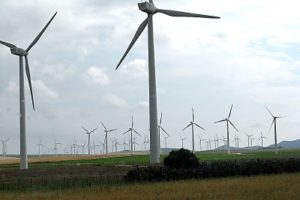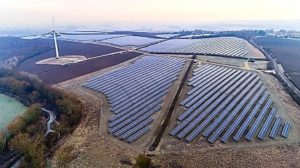Angus Taylor’s tech roadmap is fundamentally flawed
— renewables are do-able almost everywhere – Mark Diesendorf

The federal government in September 2020 revealed the five low-emissions technologies it will prioritise for investment. The so called “technology road- map” offers scant support for renewable energy, for reasons that do not stand up to scrutiny.
The technologies at the centre of the roadmap are: clean hydrogen, energy storage, low-carbon steel and aluminium, carbon capture and storage, and soil carbon.
Federal energy minister Angus Taylor said proven technologies such as solar and wind “are not the focus of the road- map”.
Recently Angus Taylor has sought to justify the government’s lack of support for renewable energy, and his position includes saying two-thirds of Australia’s emissions now are produced “outside the electricity grid”, implying renewable energy has little role to play beyond the power sector. But I believe that claim is misleading.

Renewables are versatile
Official data showing the sources of Australia’s greenhouse gas emissions in 2018 reveals that 82% of the national total stems from energy emissions. This does not just include electricity generation, but non-electrical heating, trans- port, and emissions from extracting, moving and using fossil fuels (fugitive emissions).
Almost all of these emissions can be avoided by renewable energy, such as by:
- using electric heat pumps (such as reverse cycle air conditioners), solar hot water, and geothermal and solar thermal for heating;
- replacing gas and coal with renew- able energy for heating in industrial processes;
- a transition to electric vehicles plus cycling and walking.
Technologies to support these uses are already commercially available.
At this stage renewable electricity is not widely used for directly replacing fossil fuel use in activities such as air and sea transport, and industrial processes such as steel-making. But with a bit of development, it can be used for producing “green” hydrogen and ammonia, which promise to decarbonise those areas.
Hydrogen is not the emissions reduction panacea Taylor seems to suggest it is. However, together with energy efficiency, green hydrogen could substitute for Australia’s non-energy industrial emissions (6.4%) together with those from air and sea transport (about 5%).
Hydrogen: a trojan horse?
The roadmap prioritises “clean” hydrogen. This does not just refer to hydrogen produced using renewables – because the government says hydrogen can be produced cleanly with coal and gas if resulting carbon is captured and stored. And the plan claims that fossil-fuel-derived hydrogen might be the lowest cost short-term clean production method.
The capture and storage of carbon is an expensive, energy-wasting technology. Despite federal governments having spent more than A$1.3 billion on the technology, a commercially viable plant has not come to fruition.
The federal government has also said that it will establish Australia’s first regional hydrogen hub, at a cost of A$70 million, to “scale-up demand and take advantage of the advancements in this low emissions, high powered source of energy”.
Almost all the proposed locations are close to coal mines or gas field, suggesting the government is preparing to wager big on hydrogen from fossil fuels.

Renewable energy: a market failure
The federal government says that solar panels and wind farms “are now clearly commercially viable and have graduated from the need for government subsidies”. The roadmap classifies renewables as mature technologies, giving them low priority.
The government intends only to invest in such mature technologies “where there is a clear market failure, like a shortage of dispatchable generation, or where these investments secure jobs in key industries.”
But an existing market failure means the future of wind and solar farms is by no means assured. The congestion on transmission lines is limiting renewables growth. More infrastructure is urgently needed to connect renewable energy to the grid, and transmit it where required.
Federal funding is also needed urgently to help the states to create renewable energy zones, as recommended by the Australian Energy Market Operator (AEMO). These areas would involve the coordinated development of grid infra- structure, such as transmission lines, in places with big renewable energy potential.
Yet the government package doesn’t prioritise these essential measures – and the existing markets will not build them.

Reason to hope
Amid the economic downturn brought on by COVID-19, there were high hopes the federal government would invest in a green-led recovery. While its roadmap contains a few bright spots, such as a focus on energy storage, overall it is not the emissions-busting plan Australia needed.
Nevertheless there is reason for hope. In the absence of federal government leadership on the reduction of carbon emissions, others are stepping up with ideas. For example, the Million Jobs Plan envisages investment in zero- emissions technologies that could create more than a million new jobs in Australia over five years. The plan, by think tank Beyond Zero Emissions, has been backed by Atlassian co-founder Mike Cannon-Brookes and senior business leaders. Other groups have proposed similarly promising plans.
The government’s latest energy plans display a failure of logic. An economic recovery that moves Australia far beyond fossil fuels is the way forward environmentally, socially and economically.
Source: The Conversation, 23 Sept 2020 https://theconversation.com/angus-taylors-tech-roadmap-is-fundamentally-flawed-renewables-are-doable-almost-everywhere-146352



























